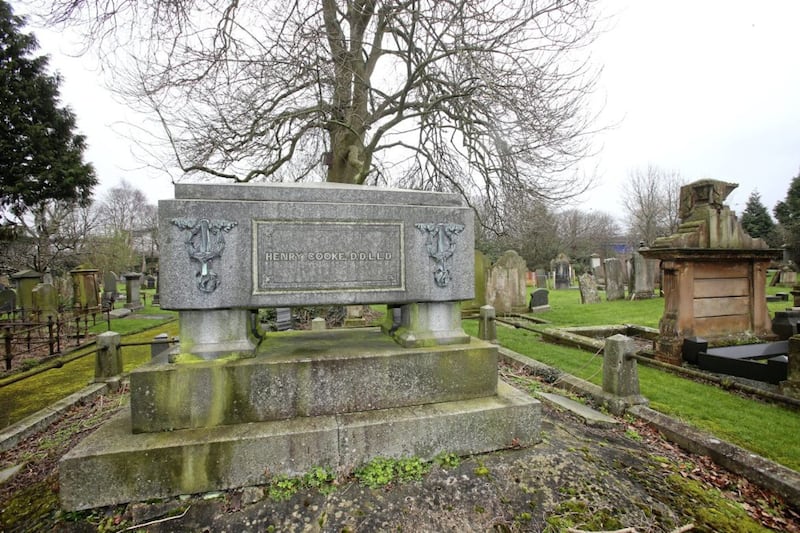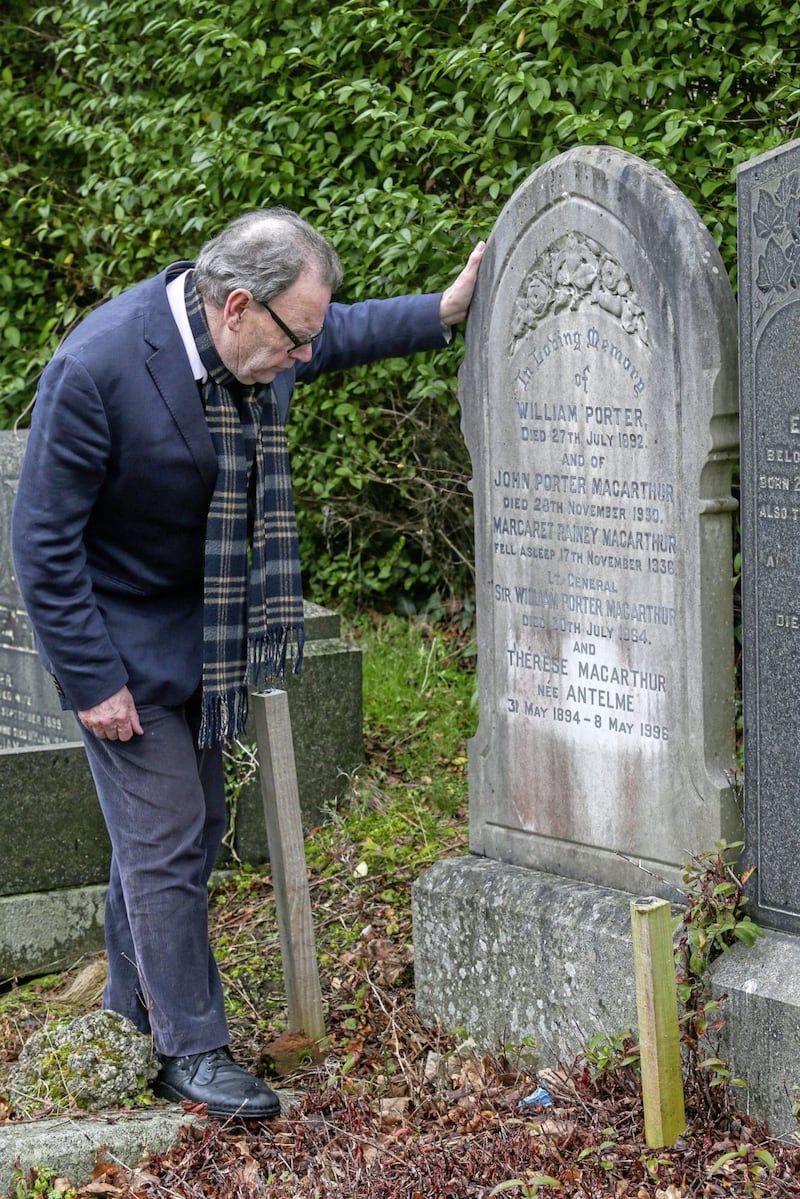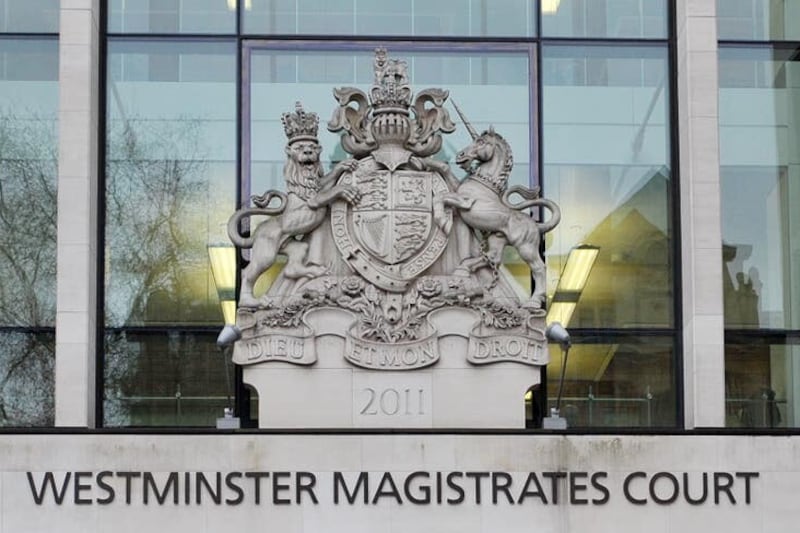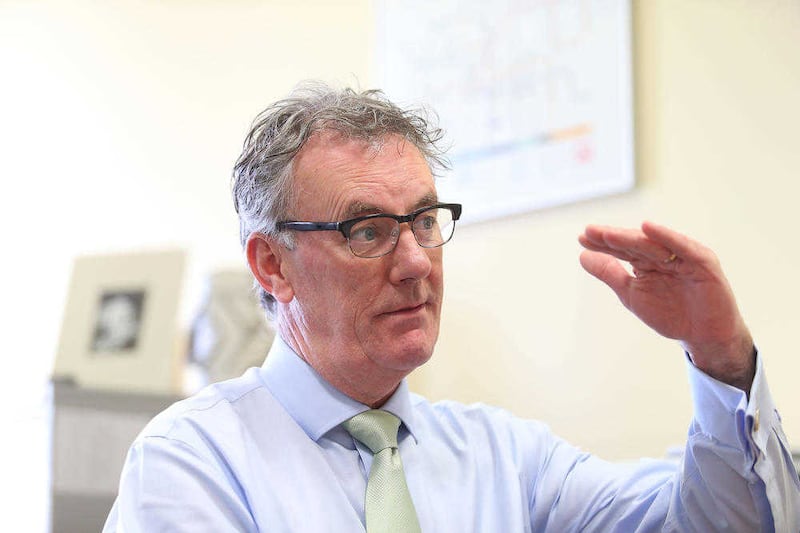TOM Hartley has a core "law of history" he always refers to: "You will always find what you are not looking for."
He adds, in his customary half-humourous style: "And life's a bit like that, too."
It certainly turned out that way in his own case. For the veteran republican, who was the second Sinn Fein lord mayor of Belfast, discovered that his grandfather from his mother's side, David Nelson, was a Presbyterian.
"It was an Eureka moment," Hartley tells me. "All these years I had been wondering why I was so contrary and argumentative and then I discover I have Presbyterianism in my DNA!"
Nelson (1873- 1961) who joined the Royal Artillery regiment of the British army in 1894, is buried in Milltown Cemetery in Belfast, which Hartley researched for his last book, published five years ago.
Now his latest work, the third in his series – which also includes a history of the City Cemetery – focusses largely on Presbyterianism through the history of another major Belfast graveyard.
Unkind colleagues like to tease Hartley that he certainly knows how to bring a cemetery to life – and call his approach 'deadpan'. He hits back, however: "There is no point in travelling the world if you don't know your own country. There is no way to understand the history of Belfast and the dynamic of the city without examining our cemeteries."

Due out next week, Balmoral Cemetery: The History of Belfast Written in Stone is about a graveyard which was first known as Belfast Cemetery, Malone and which fell into disuse before being taken over by Belfast Corporation in the 1950s.
It was a cemetery created in controversy, in 1855. Two leading Presbyterians of the day, the Rev Henry Cooke and the Rev Joseph MacKenzie, opened it after being refused permission to conduct a proper Presbyterian burial in another graveyard.
"That was probably Drumbo Church of Ireland and I don't know who it was they were burying," Hartley, who represented the Falls area on Belfast City Council for many years, says.
"The sexton stepped in and prevented the funeral. I don't know what the reasons were but there were always tensions between the denominations and it was a Church of Ireland burial ground.
"So Cooke and MacKenzie decided to open their own cemetery and they bought the land and then stipulated that people from any denomination – Church of Ireland, Methodist, Catholic – could be buried there, which really goes against the trend at the time. But they were quite explicit about it."
Though not a fervently religious person himself, Hartley – who is now 73 – admits having been long fascinated by the subject.
He was involved in the Sinn Fein outreach project based around Clonard Monastery on the Falls Road which saw relationships develop with senior Presbyterians including Jack Weir, Godfrey Brown, the Rev Lesley Carroll and the Rev Ken Newell.

"I hope he won't mind my saying so but [the Rev] John Dunlop and I have now been arguing with each other for years," he says.
"Even as a child growing up on the Falls I wondered to myself what was the difference between subscribing and non-subscribing Presbyterianism and so on. Then when I started my research I found out that basically they represented different tensions within Presbyterianism that had to do with interpretations around the central idea of the Reformation, the right of the individual to interpret scripture, and the idea of an organised church.
"It took me a long time to get my head around the church as an organisation against the individual conscience."
Historian rather than theologian, Hartley likes to describe himself as a "research junkie".
Close to Stockmans Lane, Balmoral Cemetery, he believes, had in total somewhere around 2,400 graves.
"To put that in context, the city cemetery had something like 57,000 graves so Balmoral was a small cemetery by comparison. And there are graves there which I can't really find."
As with his book on the City Cemetery, Hartley has uncovered some remarkable individuals this time around. "Graves always manage to upend your expectations," he says.
Both Cooke ("a colossus of Presbyterianism at the time") and MacKenzie are buried there, as might be expected, as well as William Porter McArthur, a military doctor from east Belfast who rose in the British army to the rank of general but also spoke and promoted Irish and founded the Irish Society at Queen's University.
Another grave belongs to John Creery Ferguson who was the first doctor in Ireland to access a stethoscope – "he would have been the first doctor here to hear the beating heart of a child in the womb" – and there are many others.
But what impressed Hartley most from his studies was the realisation that Presbyterians opened around 80 schools and colleges across Belfast.
"There was a tremendous emphasis on the importance of education," he says. The fact chimes deeply with Hartley, who left school at 15 without qualifications to take up a job as a messenger and who for a long time felt a gap in his own education.
"I have often asked myself why in my youth did I not have that curiosity, the determination to find out and to understand. I don't know," he confesses.
"Now the best part of all of this is when you just cannot find a certain piece of information and then suddenly you come across it and it makes everything else fall into place. That is so gratifying."
Hartley is a keen cyclist and still conducts regular tours of Belfast's old cemeteries. Although this is book number three in his graveyard series, there may yet be more, he hints.
"I don't know what my next project will be," he says. "Perhaps in the histories of graveyards I will establish my very own genre."
:: Balmoral Cemetery: The History of Belfast Written in Stone by Tom Hartley, is published on March 14 by Colourpoint Creative.








